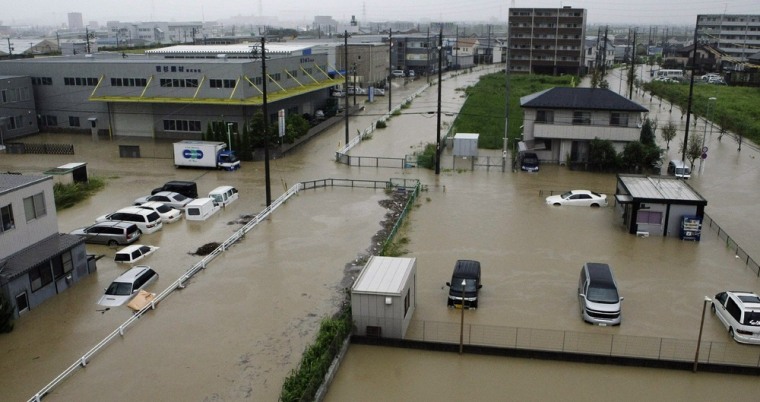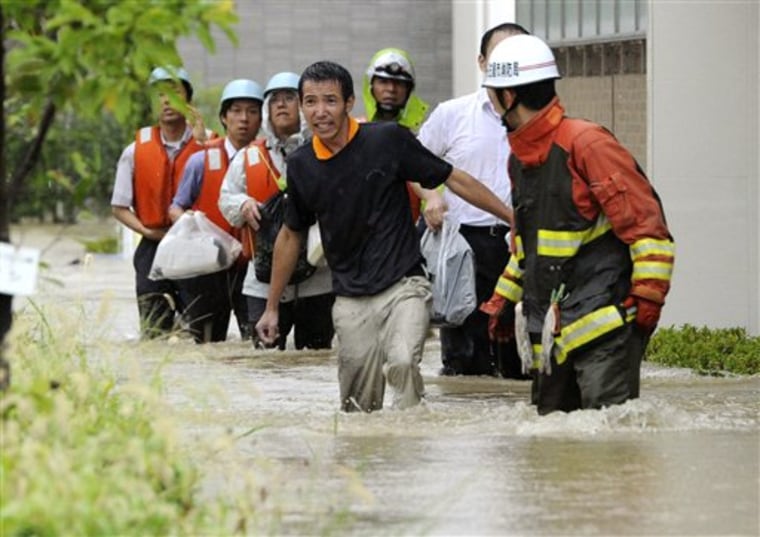At least four people died and two were missing in Japan as typhoon Roke bore down on Tokyo on Wednesday, bringing heavy rain and strong winds and disturbing transport systems, public broadcaster NHK said.
NHK said about 1.3 million people have been advised to leave their homes due to rising rivers. In the city of Moriyama, 80,000 residents were ordered to evacuate.
Toyota Motor Corp plans to close 11 factories in central Japan early on Wednesday, eliminating evening shifts, while utility Chubu Electric Power has lost about 1,870 megawatts of hydro power output due to the typhoon.
The center of typhoon Roke was off Japan's Pacific coast at 10 a.m. (9 p.m. ET), moving northeast at 35 km (22 miles) per hour, and is forecast to make landfall later on the day in central Japan or a region around Tokyo, the Meteorological Agency said.
"We need to exercise the maximum caution against heavy rain, strong winds and high waves in wide areas from western to northern Japan, according to the Meteorological agency," Chief Cabinet Secretary Osamu Fujimura told a regular news conference.
The typhoon caused 278 flights to be canceled, NHK said.
Tokyo Electric Power Co said it was taking steps to prevent rainfall from entering reactor and turbine buildings in the tsunami-crippled Fukushima Daiichi nuclear power plant.
Accuweather.com reported that the stricken nuclear power complex could see 6 inches of rain, complicating cleanup work.
The typhoon has so far caused no damage to the plant, where reactor cooling systems were knocked out by the March 11 earthquake and tsunami, triggering meltdowns a radiation crisis.
The site still has pools of radioactive water left from the huge amounts used to cool the reactors and bring them under control, raising concerns that heavy rain could cause overflows into the sea and groundwater. Leaks of radiation and contaminated water from the plant have already raised fears about food safety.
The plant, 240 km (150 miles) north of Tokyo, was unaffected by typhoon Talas, which hit Japan earlier this month and left about 100 people dead or missing.

In the major city of Nagoya in central Japan more than a million people were urged to evacuate on Tuesday, but the city lifted all evacuation advisories and orders by 11:15 a.m. (10:15 a.m. ET) on Wednesday as the possibility of river overflows receded.
Heavy rains as the storm approached caused floods and road damage in dozens of locations in Nagoya and several other cities, the Aichi state government said.
Television footage showed Nagoya residents wading through water up to their knees. In parts of the city near swollen rivers, rescue workers helped residents evacuate in rubber boats.
